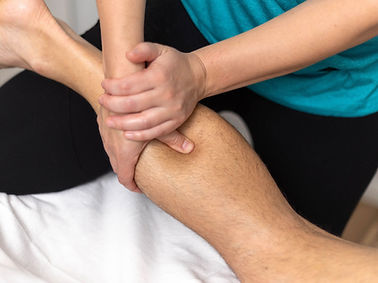
Specalised techniques
Each therapist has their individual way of working with their clients to get the best results.
We all have our Diploma of Remedial Massage as the standard for a remedial therapist. There are more advanced techniques that are learnt over and above the diploma course through on going professional education.
Not all therapist have the same skill set and learn more advance techniques at different rates through their career.

Trigger Point Therapy
The application of direct and sustained pressure on the active “trigger point”, aiming to deactivate and alleviate the associated pain and restore function of the area.
Trigger points can be caused by muscle overuse, inflammation, trauma or postural related stress. These points can inflict pain over the muscle affected or refer pain to other areas of the body.
Myofascial Release
The application of direct manual pressure and stretching along the fascial layers (connective tissue), to release stiffness, relaxing the tissue and restoring elasticity to the fibres.
Restriction in fascia can often become rigid and stuck due to underuse, inactivity, or injury – leaving you feeling tight, stiff and immobile. Myofascial release is a useful technique to assist in the reduction of these symptoms.


Myofascial Cupping
The application of acrylic cups being applied to the surface of the skin with suction and movement that mimics some soft tissue techniques.
The focus of this technique is on the fascia (Connective tissue) to help desensitize an area so that further remedial techniques can be applied more directly.
In some cases, the cups can leave markings on the skin, these are not bruises and do not hurt and can last on the skin from 1- 10 days.
Functional Release Cupping
The integration of myofascial cupping with the concepts of anatomy trains (fascial and functional lines of the body) and functional movement patterns.
It involves the static positioning of cup in certain locations and the integrating dynamic, functional movement to affect a positive change and aims to restore healthy, functioning movement.
This technique is use for the treatment of muscular pain and soft tissue restrictions. It has an affect through increasing localised blood vasodilation, desensitises pain and improves soft tissue extensibility.


Joint Mobilisation
The application of sustained rhythmic passive accessory movements performed to the client tolerance to assist in the restoration of joint movement.
This technique is done with the therapist’s hands or with the assistance of a belt by gently performing back and forth traction to a joint to encourage normal range of movement.

